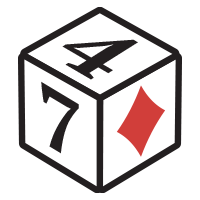The Best Players Focus on this Game Aspect
Poker is a game of incomplete information. Since you can’t see your opponent’s cards, every decision must be based on the information you can observe — primarily the betting action. But there’s more nuance than that.
In this hand, two of the best online cash game players — Linus Loeliger (LLinusLLove) and Taisto Janter — clash at some of the highest stakes online.
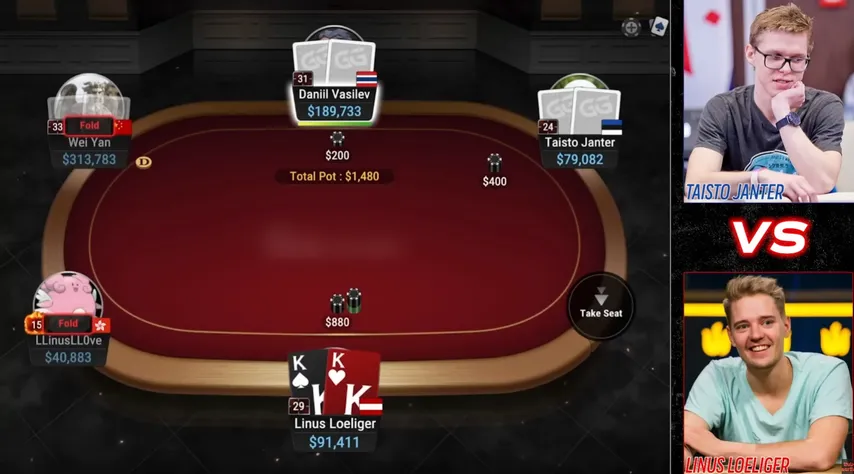
Linus opens from the hijack, and Taisto calls in the big blind.
The flop comes , and Linus continuation bets 75% of the pot — the solver’s most preferred sizing here. On this texture, the hijack has a much stronger range advantage and wants to capitalize early by betting big while the board is still “clean” and favorable.
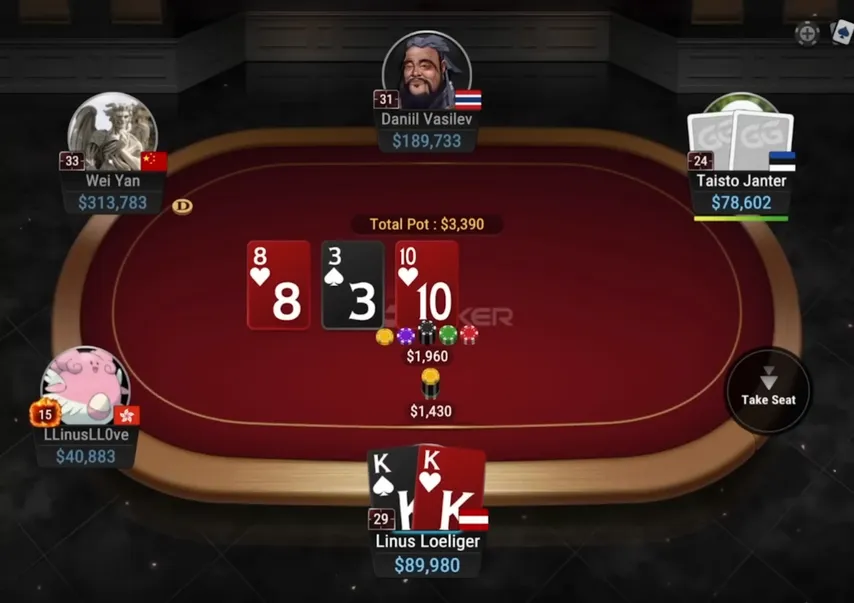
Generally, the more potential future cards that could shift the equity distribution, the larger you want your c-bet size to be with your range. Still, the solver does include some checking even with this strong advantage. Hands like sets and two pair are always bet, but the weaker the hand, the less frequently it wants to bet. Bottom pair, for example, is one of the least-frequent bets. Stronger pairs, on the other hand, benefit from betting more often for value.
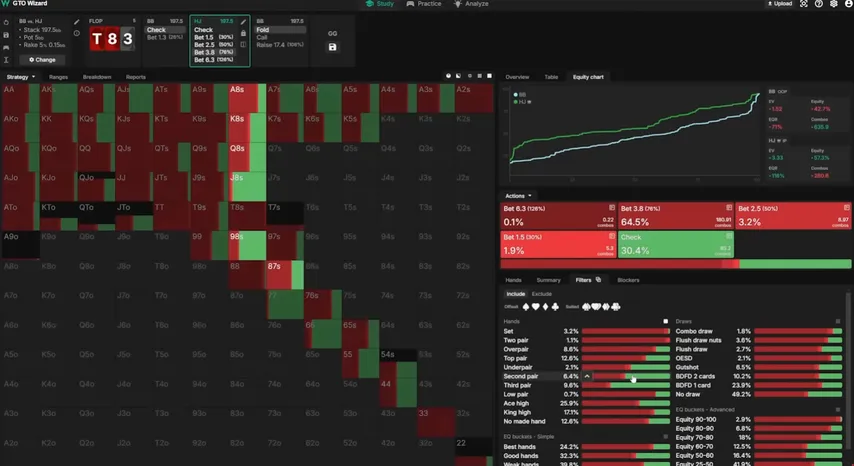
To remain balanced, your checking range should include some top pairs, while your betting range should occasionally include lower pairs. This ensures your strategy isn’t face-up in either line.
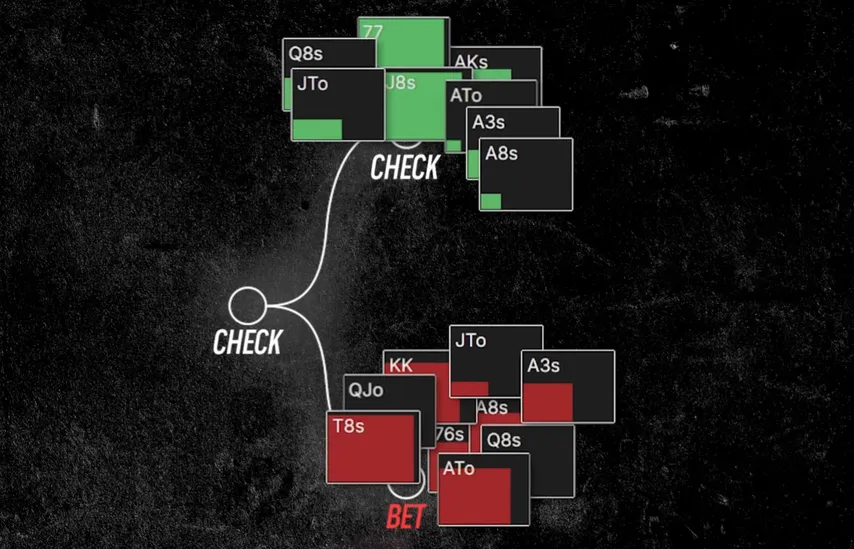
A common simplification is to adopt a range-betting strategy — betting your entire range with the same size. This eliminates the complexity of deciding which hands to bet and how to balance different ranges.
But is this approach good enough from an EV (expected value) perspective?
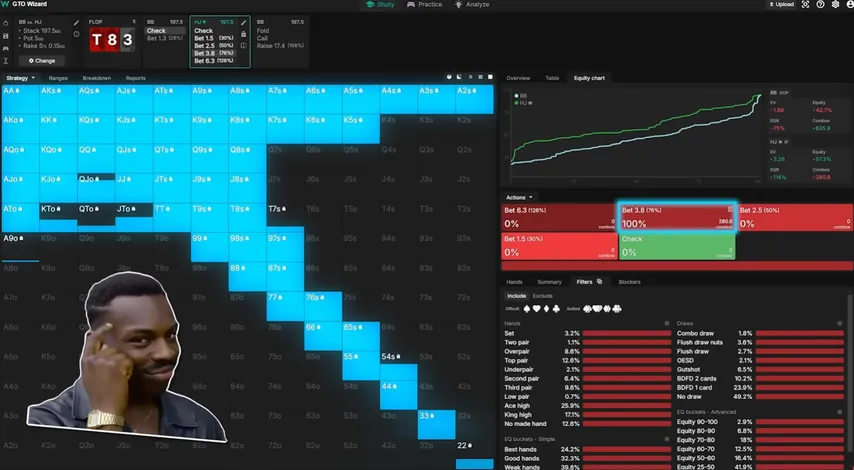
In solver simulations, simplifying to a 75% pot range bet loses about 0.07 big blinds of EV — roughly 1.4% of the pot — compared to the fully mixed strategy. Whether that’s acceptable depends on how much easier the simplified approach is to play and how many mistakes you or your opponents are likely to make.
A widely used rule of thumb is that an EV difference below 1% of the pot is acceptable in most scenarios. At 1.4%, this example is slightly above that benchmark — but there’s an important caveat: that loss assumes the big blind perfectly adjusts to your range-betting strategy, mainly by check-raising much more often than they would against a mixed approach.
In reality, most opponents won’t know you’re range-betting, and even if they suspect it, it would take a large sample size to detect. They’d also need to know that optimal counterplay involves check-raising nearly twice as many hands. If your opponent fails to adjust and instead responds with the same strategy they’d use against a solver-approved mix, the EV loss drops to just 0.02 big blinds — about 0.4% of the pot.
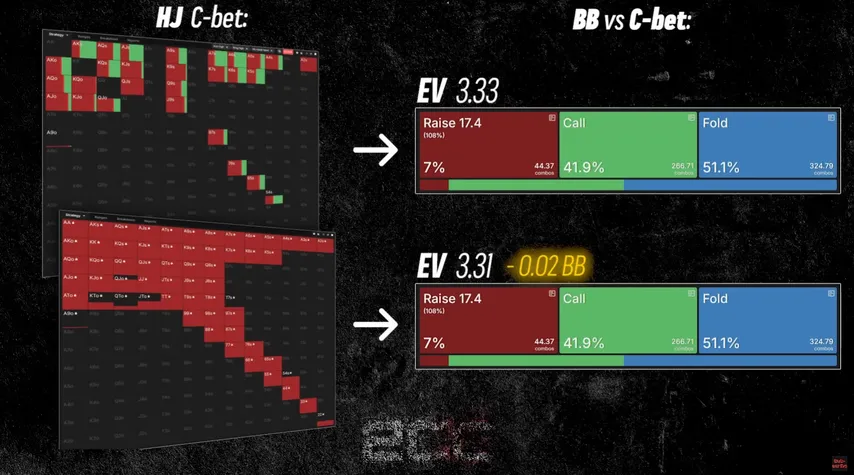
Even that number may overestimate population ability. In practice, mid-stakes players check-raise far less often against a 75% pot c-bet than they should, according to solver data. That means range-betting more frequently isn’t just easier — it’s often an exploitative adjustment against the field.
At the highest stakes, though, where opponents can adjust closer to GTO, players like Linus tend to use a mixed strategy instead of a pure range bet.
with a heart are always a bet...
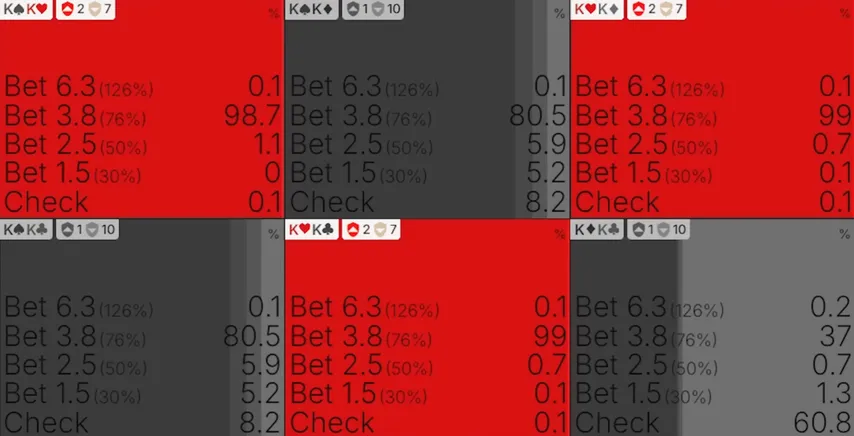
..and we get called.
The turn comes the , and the hijack still holds a range advantage — though now only in roughly the top third of possible hands.
Because Linus bet all of his strong and nut hands on the flop, those hands continue to the turn. However, many of his weakest hands also make it this far. Taisto, on the other hand, would have check-raised his strongest holdings on the flop, meaning fewer nutted hands remain in his range. But he also isn’t check-calling with total air, so his weakest hands are stronger than Linus’s weakest.
This dynamic — a polarized range (very strong or very weak hands) against a condensed, medium-strength range — is ideal for an overbet. Linus can apply significant pressure, forcing Taisto's middle holdings into tough decisions and maximizing the EV of his strongest hands.
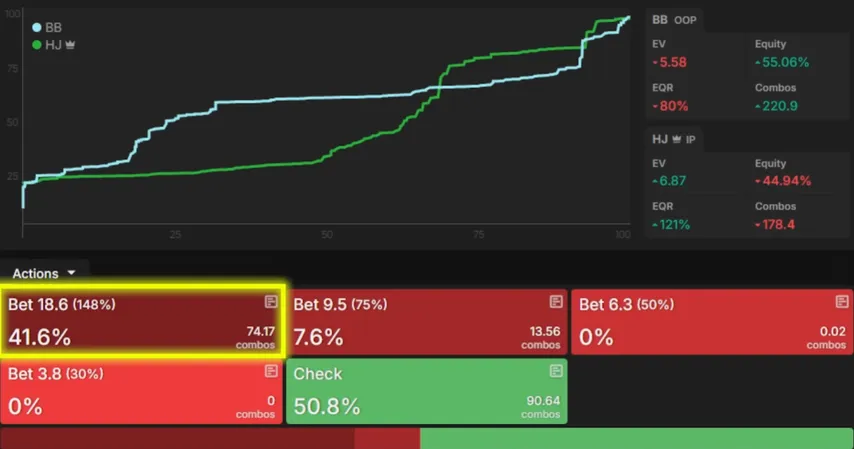
Against an overbet on the turn, the big blind is theoretically supposed to fold nearly 60% of hands. Only a handful of holdings weaker than top pair can continue — and even those often mix in folds. Some two-pair hands and nearly all sets should raise at this stage.
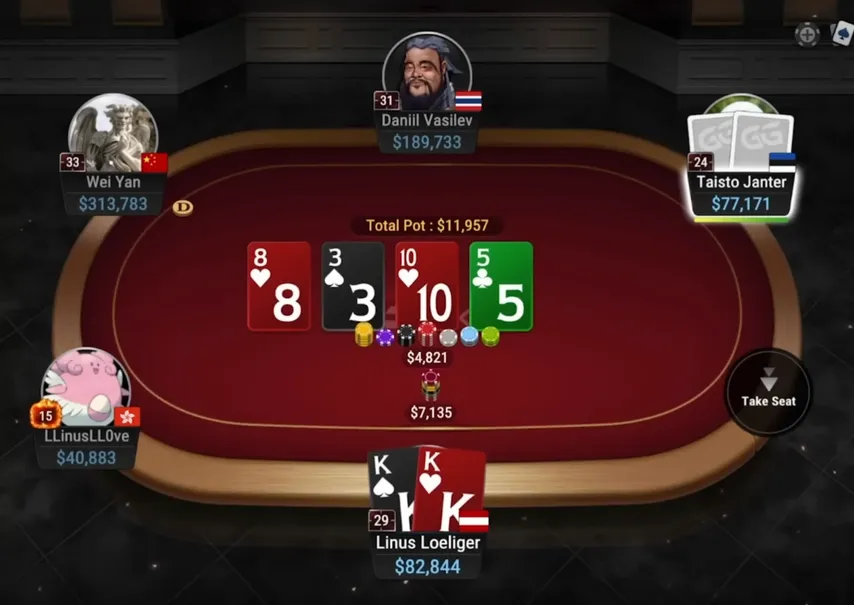
It’s worth noting that the players are 200 big blinds deep, and this depth significantly affects optimal decisions. With deeper stacks, sets have a strong incentive to build the pot early, making it easier to play for stacks by the river. That dynamic changes dramatically with 100 big blind stacks — but more on that in a moment.
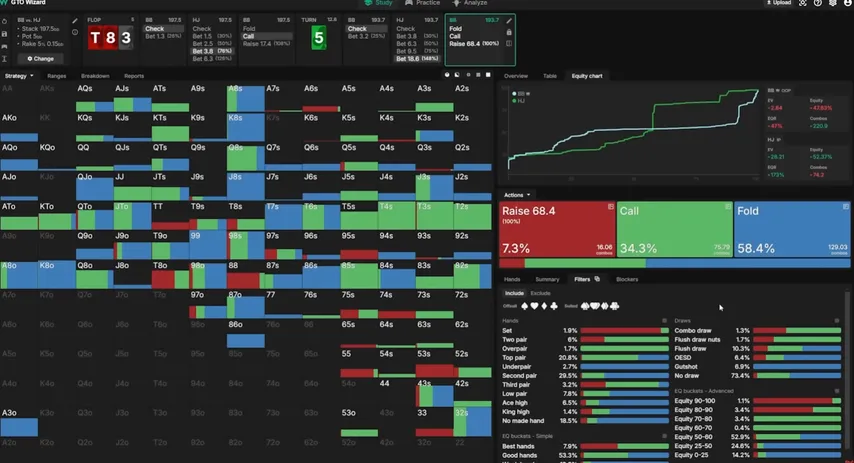
Taisto calls again, and the river brings the .
If your instinct is to check back with pocket kings, think again. On this river, kings with a heart can actually bet most of the time. They can extract value from a good portion of overpairs, top pairs, and even some lower pairs that will call in theory.
If, however, you believe your opponent won’t call with those weaker hands, you could exploit that tendency by over-bluffing instead.
If complex strategy and solved situations are going over your head, that doesn't mean poker is off-limits to your skill level. It just means you need to find the appropriate poker room to play in.
If you're more interested in fun, action, and not grinding for long sessions, we recommend sites like 888poker, CoinPoker, and GGPoker. These rooms are known for softer games, mostly because of the large fields and lower stakes.
If you're more interested in building an income and grinding, we recommend sites like America's Cardroom, TigerGaming, or SportsBetting. The huge fields, lucrative tournament guarantees, and international player bases are perfect for experienced players to generate profit at a multitude of stakes.
How Stack Depth Changes Strategy
The stack size dramatically changes how the solver plays this river.
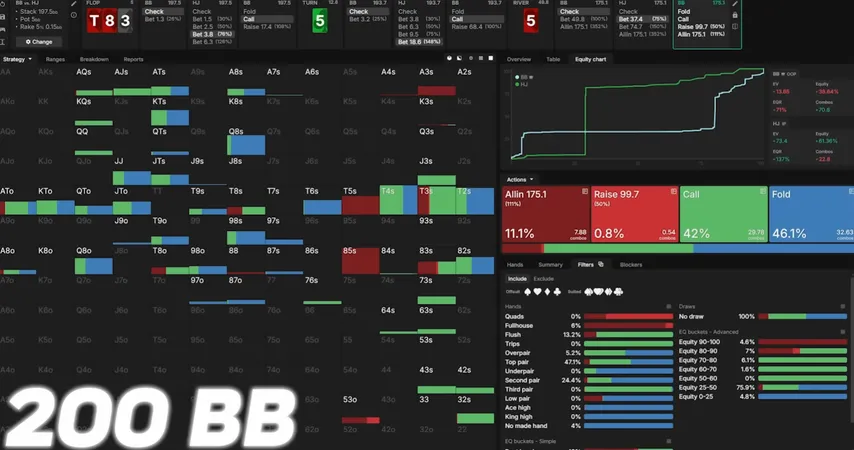
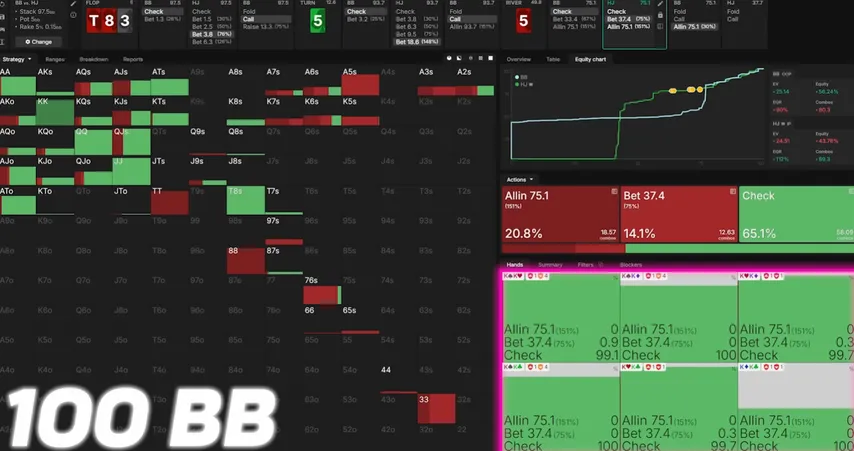
When we run the same simulation at 100 big blinds deep, become a pure check-back — a stark contrast to the 200bb strategy.
Why? The answer lies in what happens on the turn.
With shallower stacks, the big blind doesn’t check-raise as many of their sets or flush draws as they do with 200bb. Instead, hands like mostly call, and almost always just call the turn bet.
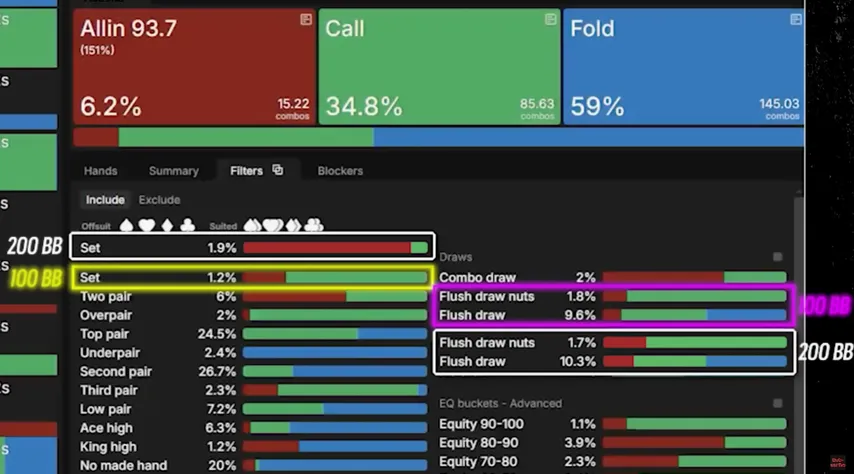
Because there’s less room to get stacks in by the river, there’s no pressing need to build the pot early.
As a result, when the hand reaches the river via a check-call, check-call line, the big blind’s range at 100bb contains more nut flushes and full houses. Against such a strong range, kings shift from being a thin value bet to a straightforward check-back.
But at 200bb, the absence of a turn raise is revealing. It heavily weights the big blind’s river range toward medium-strength hands rather than monsters. That means our value threshold shifts, and betting thinner hands like kings with a heart becomes profitable.
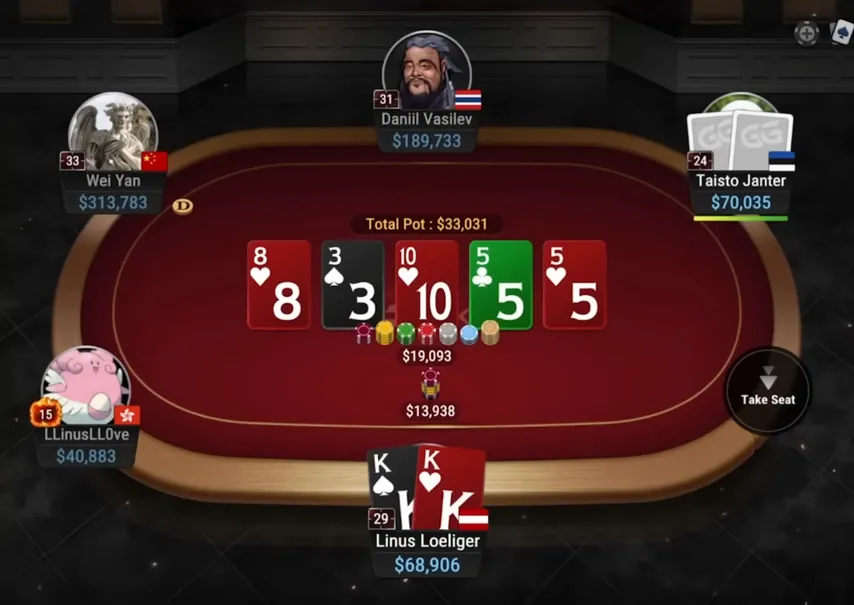
Understanding what is in your opponent’s range at every stage of the hand is essential for strong play.
But the real crushers go one step further: they also focus on what isn’t in that range.
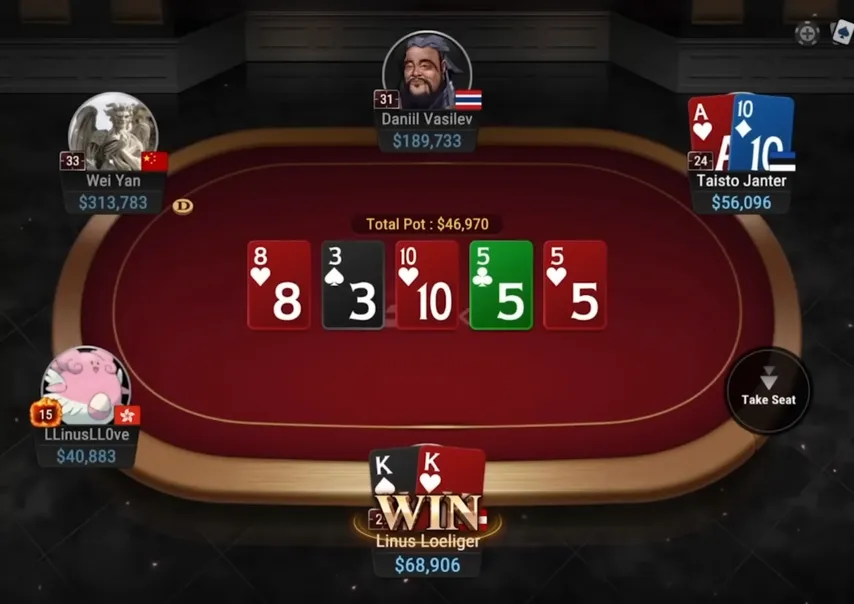
Recognizing which hands are missing — because they would have played differently earlier — lets you tailor your betting sizes, bluff frequencies, and thin value bets with surgical precision.
That skill is what separates good players from the ones no one wants to face at the table.






